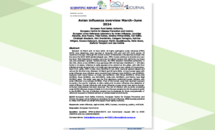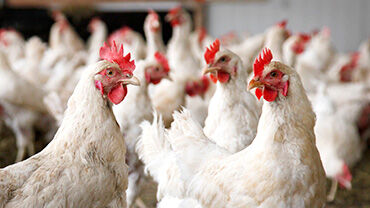Avian influenza overview December 2024-March 2025
Between 7 December 2024 and 7 March 2025, 743 highly pathogenic avian influenza (HPAI) A(H5) virus detections were reported in domestic (239) and wild (504) birds across 31 countries in Europe. HPAI A(H5N1) virus detections were predominant and mainly located in central, western and south-eastern Europe.
No evidence of human-to-human transmission has been documented during the reporting period. The risk of infection with the avian A(H5) influenza viruses of clade 2.3.4.4b currently circulating in Europe remains low for the general public in the European Union/European Economic Area (EU/EEA). The risk of infection remains low-to-moderate for those occupationally or otherwise exposed to infected animals or contaminated environments.
Most HPAI A(H5) virus detections in wild birds concerned waterfowl, particularly mute swans, barnacle geese and greylag geese. Limited secondary spread was observed among the poultry outbreaks, and outdoor poultry access remained an important risk factor at the interface between wild and domestic birds. HPAI A(H5N5) outbreaks occurred only in wild birds and were increasingly reported in waterfowl. For the first time since spring 2024, several HPAI virus detections were reported in domestic cats and wild carnivores in Europe. In the United States of America (USA), the number of dairy cattle farms reportedly affected rose to almost 1,000 in 17 States, and a different HPAI A(H5N1) virus genotype (D1.1) was reported in this species. Between 12 December 2024 and 7 March 2025, 22 new cases of avian influenza virus infection in humans were reported in the USA (12 A(H5) cases), Cambodia (two A(H5N1) cases), United Kingdom (one A(H5N1) case), and China (six A(H9N2) cases and one A(H10N3) case). Most of the A(H5) human cases (93%, n = 14/15) had reported exposure to poultry or dairy cattle prior to avian influenza virus detection or onset of illness. Considering the widespread circulation of avian influenza viruses in animal populations, human infections with avian influenza viruses remain infrequent. No evidence of human-to-human transmission has been documented during the reporting period. The risk of infection with the avian A(H5) influenza viruses of clade 2.3.4.4b currently circulating in Europe remains low for the general public in the European Union/European Economic Area (EU/EEA). The risk of infection remains low-to-moderate for those occupationally or otherwise exposed to infected animals or contaminated environments.
Download

Note
This article was originally published on 21 March 2025. On 15 April 2025, the following changes were implemented: Tables A.2 and A.3 in Annex A were updated and the corresponding Knowledge Junction (Zenodo) link was replaced (pp. 71 and 73); the reference “DWHC, online-b” was deleted from p. 32, as it did not refer to a serological study in cats; “barn owl” was changed to “common barn owl” (pp. 23 and 24); the savannah cat was removed from the list of new mammal species, as it refers to a breed and not to a species (p. 51); the Norway rat was removed from the list of new mammal species, as it was already included with a different name (brown rat) (p. 51); “Norway rat” was changed to “brown rat” (p. 33); “USDA” was added as a reference for the American marten, bobcat, cat and leopard in Table 5; the Latin name was added for the American marten in Table 5; the black rat and cheetah, including country and reference, were added to Table 5; “USDA” and “United States of America” were added to the brown rat in Table 5; “2024” was deleted from p. 70. These editorial corrections do not materially affect the content or outcome of this scientific output. To avoid confusion, the original version of the output has been removed from the ECDC website, but is available on request.







